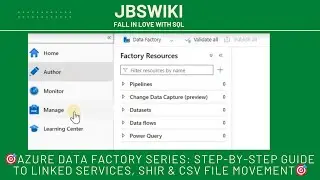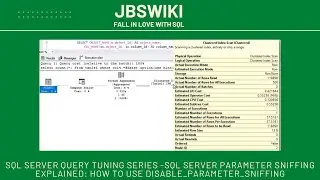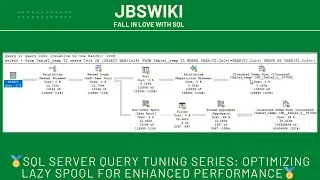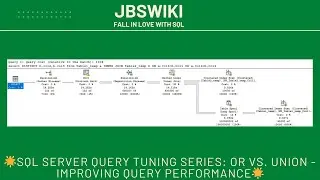SQL Server Query Tuning Series - Estimation with Filter Predicates and Windows Functions
SQL Server Query Tuning Series - Demystifying Azure SQL Server Query Estimates: Exploring Statistic-Based Estimation with Filter Predicates and Windows Functions @jbswiki #querytuning
Welcome to our comprehensive guide on demystifying Azure SQL Server query estimates. In this video, we will delve into the intricacies of query estimation when working with filter predicates that utilize Windows functions in Azure SQL Server. By understanding how the query optimizer leverages SQL Server statistics to estimate the cardinality of such queries, you can unlock valuable insights into query performance optimization.
Introduction to Query Estimation
To kick things off, we'll provide an overview of query estimation in Azure SQL Server. We'll discuss the importance of accurate estimates in query optimization and the role of SQL Server statistics in providing cardinality estimates. Understanding these concepts will set the foundation for our exploration of filter predicates and Windows functions.
Understanding Filter Predicates and Windows Functions
In this section, we'll dive into the details of filter predicates and Windows functions. We'll explain how filter predicates act as conditions to filter rows in a query, and how Windows functions provide a way to perform calculations over a specific range of rows. Understanding these concepts is crucial for comprehending the impact they have on query estimates.
SQL Server Statistics and Cardinality Estimation
To estimate the number of rows returned by a query involving filter predicates and Windows functions, the query optimizer relies on SQL Server statistics. We'll explore the different types of statistics available, such as column-level and multi-column statistics, and how they play a role in cardinality estimation. We'll also discuss the significance of histogram data and density vector information in estimating the selectivity of filter predicates.
Handling Filter Predicates with Windows Functions
In this section, we'll dive deeper into the estimation process when working with filter predicates that utilize Windows functions. We'll explore scenarios where the use of Windows functions can introduce complexity in query estimates and discuss strategies for optimizing their performance. We'll cover topics such as the order of evaluation, filter pushdown, and the impact of window frame specifications on query estimates.
Best Practices and Optimization Techniques
To conclude our video, we'll provide a set of best practices and optimization techniques for working with filter predicates and Windows functions in Azure SQL Server. We'll discuss the importance of maintaining up-to-date statistics, using query hints and trace flags, and leveraging query plan analysis tools to identify and address potential performance bottlenecks.
By the end of this video, you will have gained a comprehensive understanding of how Azure SQL Server estimates queries involving filter predicates that utilize Windows functions. Armed with this knowledge, you'll be able to make informed decisions and optimize your queries for improved performance in Azure SQL Server environments.
Join us on this journey of demystifying query estimates and unleashing the full potential of your Azure SQL Server!































